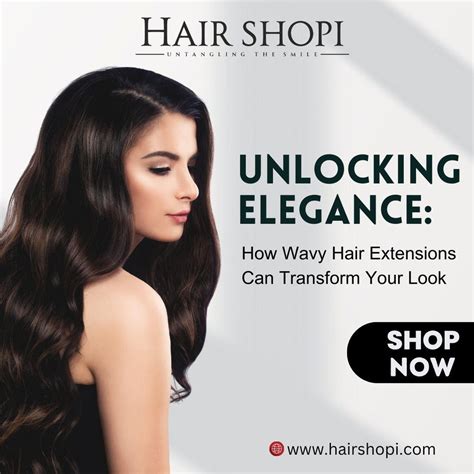Hair extensions have become increasingly popular in recent years, offering an instant and versatile way to add length, volume, and style to your natural hair. With countless options available, choosing the right type of hair extensions can be overwhelming. To help you navigate the world of hair extensions, we delve into the 5 most popular types, their benefits, and how to choose the best one for your needs.

1. Clip-in Hair Extensions: The Quick and Easy Solution
Benefits:
* Effortless to apply and remove, making them ideal for occasional use
* Offer instant and temporary transformation without commitment
* Wide range of styles and colors available to match any hair type
Pain Points:
* Can be visible under close inspection
* Limited customization options compared to other types
2. Tape-in Hair Extensions: Seamless and Durable
Benefits:
* Invisible under natural hair, creating a seamless blend
* Long-lasting with proper maintenance, lasting up to 8-12 weeks
* Thin and lightweight, providing a comfortable wear
Pain Points:
* Requires professional installation and removal
* Can be more expensive than other types
3. Micro-Link Hair Extensions: Discreet and Customizable
Benefits:
* Small, cylindrical beads are attached to natural hair, creating a secure and discreet hold
* Highly customizable, allowing for precise placement and blending
* Long lifespan, lasting up to 6-9 months with proper care
Pain Points:
* Time-consuming installation and removal process
* Requires specialized tools and techniques
4. Keratin-Tip Hair Extensions: Permanent Investment
Benefits:
* Bonded to natural hair using heated keratin, providing a virtually unbreakable hold
* Long-lasting, lasting up to 6 months or longer
* Blends seamlessly with natural hair, creating a natural look
Pain Points:
* Permanent and can only be removed professionally
* Can cause damage to natural hair during removal
5. Sew-in Hair Extensions: Natural-Looking Volume
Benefits:
* Cornrows are braided into natural hair, and extensions are sewn in for a secure hold
* Provides substantial volume and length
* Customizable and versatile, allowing for various styles
Pain Points:
* Requires skilled installation and removal
* Can be uncomfortable or itchy if not installed properly
Choosing the Right Type
The best type of hair extensions depends on your individual needs and preferences. Consider the following factors:
- Desired Style: Do you want subtle volume, dramatic length, or bold color?
- Hair Type: Match the texture and color of your own hair to ensure a seamless blend.
- Time Commitment: Some types require professional installation and extensive maintenance.
- Budget: Hair extensions can range in price depending on the type and quality.
Tips and Tricks
- Consult a Professional: Seek guidance from an experienced hairstylist to determine the most suitable type for your hair and goals.
- Proper Maintenance: Follow the care instructions provided for each type of hair extensions to ensure longevity and healthy hair.
- Avoid Excessive Heat: Limit the use of heat styling tools on hair extensions to prevent damage and premature shedding.
- Protect from Environmental Damage: Use UV protection sprays and hats to shield hair extensions from sun damage and chlorine.
Step-by-Step Approach
Choosing a Type:
1. Determine your desired look and hair type.
2. Research the different types of hair extensions.
3. Consult a professional for guidance.
Installing Extensions:
1. Purchase high-quality hair extensions that match your natural hair.
2. Follow the installation instructions specific to the type of hair extensions chosen.
3. Seek professional assistance if necessary.
Maintaining Extensions:
1. Wash and condition hair extensions according to the recommended frequency.
2. Use gentle, sulfate-free shampoos and conditioners.
3. Avoid brushing hair extensions when wet.
4. Use a wide-toothed comb or detangling brush.
5. Regular trims are essential to prevent split ends.
